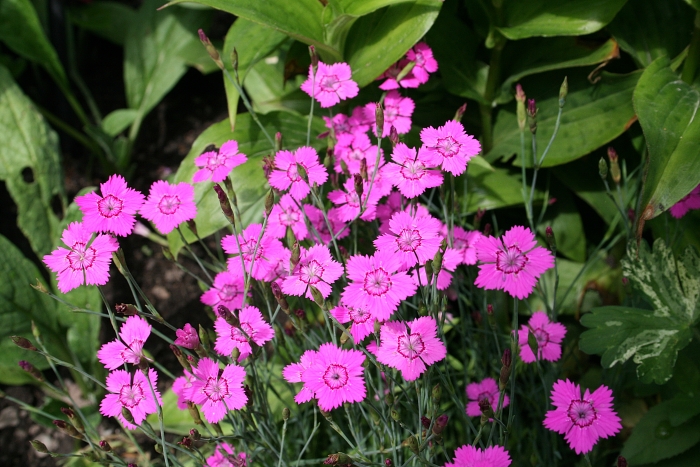Maiden Pink
(Dianthus deltoides)
Maiden Pink (Dianthus deltoides)
/
/

Jean-Pol GRANDMONT
CC BY 3.0
Image By:
Jean-Pol GRANDMONT
Recorded By:
Copyright:
CC BY 3.0
Copyright Notice:
Photo by: Jean-Pol GRANDMONT | License Type: CC BY 3.0 | License URL: https://creativecommons.org/licenses/by/3.0 | Uploader: Jean-Pol GRANDMONT | Publisher: Wikimedia Commons | Title: 0_Dianthus_deltoides_alpinus_-_Yvoire.JPG | Notes: move approved by: [[User:Deadstar]] This image was moved from [[:Image:乗鞍・富士見岳P8128531コマクサ.jpg]] == ファイルの概要 == {{Information |Description=乗鞍・富士見岳{{en|Mt Fujimi Norikura dicentra P8128531}} |Source=[[:ja: |


































































Estimated Native Range
Summary
Dianthus deltoides, commonly known as Maiden Pink, is an evergreen perennial herb native to a variety of habitats including open grasslands, rocky slopes, and forest clearings across Europe and Asia. It typically grows to about 45 centimeters tall and forms a loosely tufted mound with very narrow green or glaucous leaves. The flowers, which bloom from late spring to midsummer, are 15–20 millimeters across and are most commonly pink, although white varieties exist. These flowers are often spotted with white and are quite showy, attracting pollinators such as bees and butterflies.
Maiden Pink is valued for its vibrant flowers and low maintenance, making it a popular choice for rock gardens, borders, and ground cover. It has received the Royal Horticultural Society’s Award of Garden Merit in the UK, indicating its exceptional performance in gardens. While it prefers full sun, it can tolerate light shade and requires medium amounts of water with well-drained soil. It’s important to note that Dianthus deltoides can spread readily, and in some regions, it is considered potentially invasive. Gardeners should be cautious and check local guidelines before planting it outside its native range.CC BY-SA 4.0
Maiden Pink is valued for its vibrant flowers and low maintenance, making it a popular choice for rock gardens, borders, and ground cover. It has received the Royal Horticultural Society’s Award of Garden Merit in the UK, indicating its exceptional performance in gardens. While it prefers full sun, it can tolerate light shade and requires medium amounts of water with well-drained soil. It’s important to note that Dianthus deltoides can spread readily, and in some regions, it is considered potentially invasive. Gardeners should be cautious and check local guidelines before planting it outside its native range.CC BY-SA 4.0
Plant Description
- Plant Type: Herb
- Height: 0.5-1 feet
- Width: 0.5-2 feet
- Growth Rate: Moderate
- Flower Color: Pink, Red, White
- Flowering Season: Spring, Summer
- Leaf Retention: Evergreen
Growth Requirements
- Sun: Full Sun
- Water: Medium
- Drainage: Medium
Common Uses
Bank Stabilization, Bee Garden, Bird Garden, Border Plant, Butterfly Garden, Deer Resistant, Drought Tolerant, Fragrant, Groundcover, Hummingbird Garden, Potted Plant, Rabbit Resistant, Rock Garden, Salt Tolerant, Showy Flowers, Street Planting
Natural Habitat
Open grasslands, rocky slopes, and forest clearings
Other Names
Common Names: Meadow Pink, Bakke-Nellike, Heidenelke, Heide-Nelke, Oeillet Couché, Oeillet À Delta, Oeillet À Feuilles, Steenanjer, Backnejlika, Ängsnejlika
Scientific Names: , Dianthus deltoides,
GBIF Accepted Name: Dianthus deltoides L.